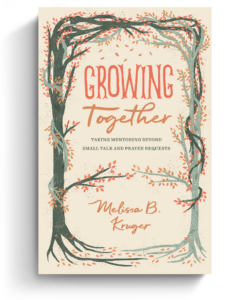In my work at a hospital I’m confronted daily with grief, loss, and trauma. I see all the worst-case scenarios: the freak accidents that leave someone permanently disabled, the horrific diagnoses in seemingly healthy kids, the loss of innocence. Trauma comes in many forms, which share a unifying thread: a deeply distressing and disturbing experience.
You may not work on a hospital trauma ward, but the past year has brought many of us into contact with other people’s distress because of widespread medical, political, social, and economic upheaval.
As a pediatric occupational therapist, I’m called to serve people who’ve experienced trauma by helping them regain strength and mobility, or balance and play skills. (I practice trauma-informed care within my scope of practice, and I recommend professional counseling whenever possible to trauma survivors.) Here’s what I’ve learned: how I treat my patients can help or hinder their healing.
The Bible instructs all of us to “bear one another’s burdens” (Gal. 6:2), but if we’re not wise in the way we shoulder these burdens, vicarious or secondary trauma can hurt our health as well.
Two Typical Responses
What do we do when faced with the grief and trauma of another? How do we react when their pain bleeds into our lives, personally or professionally? We typically have two responses.
If we’re not wise with the way we shoulder these burdens, vicarious or secondary trauma can hurt our health as well.
Sometimes when I see the ugly effects of sin, abuse, or neglect, I’m overwhelmed and I shut it out. Concerned about emotional entanglement or my ability to withstand the pain, I block out the emotional aspect of the suffering and deal only with the physical.
We sometimes do this to each other when we solely focus on practicalities or offer platitudes instead of hearing one’s lament and painful story. We try to prevent vicarious trauma by ignoring primary trauma. But this is self-protective and insulating, and it often serves to further isolate the victim’s already tender, injured heart.
Alternatively, we can become swept away by trauma. There have been times when, both personally and professionally, I’ve become so involved in another’s suffering that it nearly swallowed me whole: the patients brought in by law enforcement because of abuse or neglect, the battered spouses, those grieving an unimaginable loss.
After meeting these traumatized people, I couldn’t think about anything but their pain. I lost my appetite and sleep, and I spent my free time researching ways to help them. I let the trauma surround me. I swam around in it. I lost myself in their pain.
This can lead to compassion fatigue and burnout. Swarms of people are leaving healthcare (and counseling and ministry) every day, often citing burnout and compassion fatigue as core reasons.
But when I shut out or ignore trauma and suffering, I disregard the imago Dei in the storyteller. I disregard the humanity in those whom God loves by ignoring their pain and the ways God is using their experience purposefully (Gen. 50:20; Rom. 5:3–5; 8:28). I cheat both them and myself by being unwilling to listen.
On the other hand, when I am swallowed up by pain, I disregard the hope of God. He is the sovereign author of all our stories. He has already provided a way to deal with our greatest source of trauma (sin) through the cross (Rom. 5:8).
Trauma Stewardship
Neither of these responses to trauma seems healthy or helpful, for the survivor or the caregiver. I believe Jesus offers us a third way: trauma stewardship. Trauma stewardship speaks to both of our typical responses to pain—shut it out or be swallowed by it.
You’re likely familiar with the idea of stewardship in Scripture: with our finances and resources (Matt. 25:14–30) and with our ministry (Eph. 3:1–2; Col. 1:24–26; 1 Tim. 1:3–5). Stewardship means wise caretaking, not ownership, of something. We see trauma stewardship modeled by Christ, who neither blocked out human trauma nor became absorbed by it.
We see trauma stewardship modeled by Christ, who neither blocked out human trauma nor became absorbed by it.
Jesus’s life is a response to those who wish to block out pain. He drew near and was compassionate, fully human “in every respect” (Heb. 2:14–18), experiencing and understanding our grief (Isa. 53:3). He didn’t hold pain at arm’s length or stand aloof, but he entered into a world filled with trauma through the incarnation (John 1:14).
Jesus cried for his friends (John 11:35), struggled through his own trauma (Luke 22:40–46), and asked friends to stay with him in his pain (Matt. 26:36–38). He didn’t practice self-protection by blocking out pain or trauma.
Jesus practiced “omnipotent compassion” for the wounded, traumatized sheep without a shepherd (Mark 6:30–34). There was power in his presence and care, not only for physical healing, but for psychological and relational healing as well.
But as he walked this tear-filled earth, our Lord wasn’t swallowed by griefs. He never despaired or lost hope. And he sometimes retreated when crowds needed him (Luke 5:15–16). He napped when others were in crisis (Mark 4:38). He wasn’t always available to everyone in need. He retreated to pray and rest in order to re-engage later (Mark 1:35–39).
Trauma Stewardship as Lament
So what might trauma stewardship look like? Trauma stewardship is the imperfect, messy practice of lamenting with others and helping them walk a difficult road.
Trauma stewardship is the imperfect, messy practice of lamenting with others and helping them walk a difficult road.
Jesus sat with Mary and Martha after their brother, Lazarus, died. Jesus let them cry, ask questions, and lament. He “was deeply moved in spirit and troubled” (John 11:33). He sensed their pain. He sobbed, too. And he gently reminded them of truth: this wasn’t the end of the story (John 11:25–26).
Trauma stewardship begins with the ministry of presence. I sit with my patients as they share their fears over their diagnosis or injury, ask anxious questions about the future, and voice the belief that the trajectory of their lives has been irreparably altered. I answer what I can and provide the rehab details I know, but I also sit with them in silence and lament. I give space for them to mourn what’s been lost, such as independence or mobility.
I also use reflective language, repeating back what they say, to affirm the importance of their voices. I ask about what’s been most difficult for them or whom they’re relying on for support and strength. These questions honor the imago Dei in the individual: each one is a whole person, not just a bundle of muscles that need strengthening and bones that need help moving.
Helping to shoulder such heavy burdens is a crucial part of rehabilitation. My presence and attention communicate that no one is alone in healing. We progress together and celebrate even the smallest of victories.
I practice trauma stewardship by honoring others’ stories, helping to carry their burden. I seek to walk alongside trauma-affected people with tenderness and strength. I “weep with those who weep” (Rom. 12:15) by being available, praying, listening well, gently speaking truth, and respecting their wounded personhood.
Lastly, I practice trauma stewardship through wisdom and discernment about when to retreat and rest. I frequently remind myself that, as a steward, I’m caring wisely and respectfully for the experiences belonging to another. I won’t always carry such burdens because I wasn’t designed to. I cast my cares on the Lord (1 Pet. 5:7)—both my own and the ones I help carry for others. He is able to take every burden and weight upon himself; I am not.
Imperfect Practice
This practice is imperfect and constantly fluctuating. I’m often acutely aware of my weakness and sense I’m erring on the side of either self-protection or enmeshment. At these times, I remind myself—and those with whom I walk through trauma—about the power, advocacy, strength, and comfort of the Holy Spirit (John 14:26; Rom. 8:26–27). We don’t carry our own burdens, pain, or trauma. We have a helper, an advocate, a trauma steward who intercedes on our behalf (Rom. 8:26–27).
Trauma stewardship honors the survivor, the pain, the story, and our limitations. It abides in hope and honors God, who never wastes pain.
Involved in Women’s Ministry? Add This to Your Discipleship Tool Kit.
 We need one another. Yet we don’t always know how to develop deep relationships to help us grow in the Christian life. Younger believers benefit from the guidance and wisdom of more mature saints as their faith deepens. But too often, potential mentors lack clarity and training on how to engage in discipling those they can influence.
We need one another. Yet we don’t always know how to develop deep relationships to help us grow in the Christian life. Younger believers benefit from the guidance and wisdom of more mature saints as their faith deepens. But too often, potential mentors lack clarity and training on how to engage in discipling those they can influence.
Whether you’re longing to find a spiritual mentor or hoping to serve as a guide for someone else, we have a FREE resource to encourage and equip you. In Growing Together: Taking Mentoring Beyond Small Talk and Prayer Requests, Melissa Kruger, TGC’s vice president of discipleship programming, offers encouraging lessons to guide conversations that promote spiritual growth in both the mentee and mentor.
































